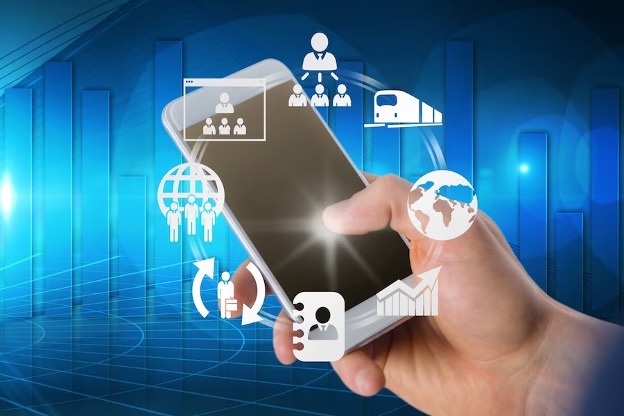In the ever evolving world of mobile technology, two giants stand tall: Android and iOS. These mobile operating systems, powering billions of smartphones worldwide, have redefined the way we communicate, work, and play.
This article delves into the fundamental differences of Android and iOS, shedding light on their dominance in the global smartphone market.

As we explore the key distinctions between these two platforms, we’ll gain a deeper understanding of the choices available to both users and developers in this dynamic mobile landscape.
Operating Systems Overview
Android
Android, developed by Android Inc. and later acquired by Google in 2005, emerged as an open-source platform. Its inaugural release in 2008 ushered in a new era of mobile computing. Android’s development has been characterized by a rapid series of versions, each named after desserts or confectionery. Its versatility, accommodating various device manufacturers, has contributed to its global dominance.
iOS
iOS, Apple’s proprietary mobile operating system, was unveiled in 2007 alongside the first iPhone. Its evolution has been marked by a commitment to a closed ecosystem, ensuring tight integration with Apple hardware. iOS prioritizes user experience, often pioneering new features and design paradigms.
User Interface (UI)
Android UI Components and Navigation Patterns
- Floating Action Button (FAB): A circular button that typically resides at the bottom right corner of the screen. It’s used for promoting the primary action in an app, such as creating a new item or composing a message.
- Navigation Drawer: A side panel that can be swiped in from the left edge of the screen or accessed via a menu button. It provides access to various app sections, settings, and navigation destinations.
- Bottom Navigation Bar: A menu placed at the bottom of the screen, often with icons and labels, allowing users to switch between major app destinations with a single tap.
- App Bar: The top app bar typically contains the app’s title, navigation icons, and actions relevant to the current screen. It can be used for contextual actions or navigation.
- Snackbars: Brief, unobtrusive messages that appear at the bottom of the screen to provide feedback or alerts to users.
- Swipe-to-Refresh: A pull-down gesture to refresh content in lists or views.
iOS UI Components and Navigation Patterns
- Tab Bar: A common navigation element placed at the bottom of the screen, allowing users to switch between different sections or tabs of the app. Each tab usually represents a distinct view or feature.
- Navigation Controller: Supports hierarchical navigation, often used for drilling down into content. It keeps track of the user’s location within the app’s hierarchy and enables easy backward navigation.
- Modal Presentation: Modal views or screens are presented as overlays, covering the current content partially or entirely. They are often used for tasks like user sign-up, settings, or creating new items.
- Swipe Gestures: iOS heavily utilizes swipe gestures for actions like navigating back, revealing hidden menus, or deleting items.
- Dynamic Type: iOS supports adjustable text sizes to accommodate user preferences for accessibility.
- Haptic Feedback: iOS devices provide haptic feedback for tactile response, enhancing the user experience with subtle vibrations.
App developers should consider these platform-specific UI components and navigation patterns to create apps that feel native and intuitive to users on each platform.
Hardware and Performance
Android’s Hardware Diversity
- Diverse Manufacturers: Android runs on devices manufactured by a wide range of companies, including Samsung, Google, Huawei, and more. This diversity leads to varying hardware specifications, including processors, RAM, cameras, and sensors.
- Custom Hardware: Some manufacturers introduce custom hardware components and features, such as foldable screens, stylus support, or advanced camera systems.
- Fragmented Ecosystem: While hardware diversity allows users to choose devices that suit their needs, it creates fragmentation challenges for developers. They must optimize apps for various hardware configurations, which can be time-consuming.
Apple’s Optimized Hardware-Software Integration
- Unified Ecosystem: Apple designs both the hardware (iPhone, iPad, etc.) and the software (iOS) that runs on its devices. This tight integration allows for a seamless and optimized user experience.
- Controlled Specifications: Apple’s control over hardware specifications ensures consistent performance across all its devices. This includes the A-series processors, high-quality displays, and camera systems.
- Performance Benefits: The optimized hardware-software integration translates into smoother performance, faster app loading times, and enhanced power efficiency. It also simplifies app development and optimization, as developers target a known set of devices.
Impact on App Performance and Optimization
Android
Developing for Android requires rigorous testing and optimization efforts due to hardware fragmentation. Developers must consider various screen sizes, resolutions, and processing capabilities. This can result in challenges with app performance and compatibility on lower-end devices.
iOS
The uniformity of Apple’s hard makes it easier for developers to create optimized apps. Apps often perform consistently well across different iOS devices. The A-series chips, in particular, deliver high levels of performance and energy efficiency.
Security and Privacy
Android Security Measures
- App Permissions: Android offers granular control over app permissions, allowing users to decide which permissions (e.g., location, camera access) an app can use. Permissions are requested when the app needs them.
- Google Play Protect: Google scans apps on the Play Store for malware and potentially harmful behavior. It also provides periodic device scans for additional security.
- Security Updates: Android devices receive security updates, but their availability depends on device manufacturers and carriers. This can lead to delays in patching vulnerabilities.
iOS Security Measures
- App Permissions: iOS also offers fine-grained app permissions, with users granting or denying access to sensitive data on a per-app basis. Permission requests are typically presented when needed.
- End-to-End Encryption: Apple’s iMessage and FaceTime employ end-to-end encryption, making it difficult for anyone to intercept or eavesdrop on communications.
- Timely Updates: Apple provides iOS updates directly to users, ensuring prompt security patches for all supported devices.
The Bottom Line
The decision to develop an app for Android or iOS is critical, and it relies on various factors. Android offers a vast and diverse user base, while iOS provides a more controlled and affluent audience. Each platform has its unique strengths and challenges.
Developers must carefully weigh market size, monetization strategies, user demographics, and development resources. They should also consider the nuances of design, development tools, and approval processes specific to each platform.
Ultimately, success in app development depends on understanding the target audience, adapting to platform-specific requirements, and delivering a high-quality user experience. By navigating these challenges and considerations thoughtfully, developers can make informed choices that maximize their app’s impact and profitability in the competitive mobile app landscape.
If you liked this article, please consider sharing it with your friends and leaving a comment below. Also, don’t forget to “Like” us on Facebook, “Follow Us” on Twitter and add the Apple Tech Talk channel to your Apple News app.
And if you haven’t subscribed to Apple Tech Talk, now would be a great time to do it so. Just scroll down to the form below and enter your name and email address. Then you’ll receive a notification whenever we post new articles. Don’t worry, we never sell or share your information. While you’re at it, check out our YouTube channel (here) where you will find video on interesting products any Apple enthusiast would love.
Harikrishna Kundariya
Harikrishna Kundariya is the Co-founder, Director, & Marketer of eSparkBiz Technologies – an excellent Software Development Company. Also, a notable IoT, ChatBot & Blockchain-savvy Developer. His 12+ years of profound experience enables him to create Digital Innovations for Startups & large Enterprises alike based on futuristic technologies like IoT, Artificial Intelligence, DevOps, and ChatBot.
The opinions expressed above are those of the author, who is solely responsible for its content, and do not necessarily reflect those of Apple Tech Talk or its management.



Leave a Comment
You must be logged in to post a comment.